ORIGIN OF HUMAN RIGHTS:
 |
| HUMAN RIGHTS |
The history of human rights, in fact, is traced back to ancient times and has
gained impetus only in recent times. It has formally became recognized only
after the formation of the United Nations in 1945, which has, as its central
concern, reaffirmed its faith in the fundamental human rights, in the dignity
and worth of human person at all levels and under all circumstances. The term
human rights virtually denote all those rights inherent in our nature and
without which one seizes to be a human being.
The idea of
Human Rights as an
entitlement of every
human being is
not only a
recent development, but can be
found in our ancient tradition as
an essential and indispensable
component of human
progress and human
civilization. To be sure, Human
Rights are a product of history; as such they should be in accordance with
history, should evolve simultaneously with history and should give the people
of global world a reflection of themselves that they recognize as their own.
Rights are a concept that has been
constantly evolving throughout human history. They have been intricately tied
to the laws, customs and religions throughout the ages.
The
Hindu Vedas, the Babylonian Code of Hammurabi, the Bible, the Quran and the
Analects of Confucius are the five main sources which deal with people’s
duties, rights and responsibilities.
The origin of human is traced by some scholars
back to the times of ancient Greeks. The fact that human rights were recognized
as natural rights of man is illustrated by a Greek play Antigone. The roots for
the protection of the rights of an individual may be traced as far back as in
the Babylonian laws, Assyrian laws, and Hittite laws and in the all major
religions of the world. In Philosophy, the development of the notion of the
natural rights of man was contributed by the stoic philosophers. They first developed
natural law theory and explained the nature of human rights, i.e. rights which
every human being posses by virtue of being human.
Generally it is said that the struggle for
human rights started in the Western world sometimes in the beginning of 13th
century, when the great English Charter known as Magna Carta was issued but the
fact is that this struggle had started even 200 years prior to the issue of
this charter determining the rights of the parliament in 1037 C.E.. However, Magna Carta enjoys the
status of a milestone in the history of human rights. King John signed this
charter. This charter was also issued in 1216, 1217 and 1325 after being
amended and modified.
Thus, the term human rights came
somewhat late in the vocabulary of mankind. It is a twentieth century name for
what has been traditionally known as 'natural rights' or the 'rights of man'.
It was first used by Thomas Paine in the English translation of the 'French
Declaration of the Rights of Man and Citizen'. The term natural law was
subsequently replaced as it had become a matter of great controversy and the
phrase 'the rights of man' was found unsuitable as it was not universally
understood to include the rights of women.
The idea that human rights could be protected by international
law in addition to municipal law developed slowly mainly because the doctrine
of absolute state sovereignty continued to prevail in the ninetieth and early
twentieth century where in human rights question were regarded as a matters
entirely within each state's own domestic jurisdiction and wholly inappropriate
for regulation by international law. International human rights laws were
considered as an attack upon the concept of state sovereignty. No doubt, there
were exceptions to the above rule which included the adoption of the Slavery
Conventions of 1926 and the establishment in 1919 of the International labor
Organization and its subsequent activities.
The covenant of the
League of Nations adopted at the end of First World War was silent on the issue
of human rights. The turning point for the traditional approach in
international law came in 1940's in midst of the extreme human rights abuses in
war torn Europe during the World War II. Shocking crimes were committed against
the humanity and there was a total suppression of fundamental human rights.
Nazi leaders of Germany have established a regime of complete lawlessness and
tyranny and had barbarously negated human values and dignity within the
territory under their occupation. It was consequently realized that the
restoration of the freedom to the common masses is one of the essential
conditions for the establishment of international peace and security. Violation
of human rights was considered as a source of international conflict and
protection of human rights was regarded as necessary for international peace.
This conviction was reflected in the proclamation issued by
President Franklin D. Roosevelt on January 6, 1941 which came to be known as
'Four Freedoms' (freedom of speech, freedom of religion, freedom from want and
freedom from fear). In his message he declared; "freedom means the
supremacy of human rights everywhere.
The same efforts for
the creation of an international organization, in order to establish peace,
were being made even when the World War II was in progress. A number of conference
and meetings were held before the United Nations, an international organization
was established in 1945. Many declaration adopted by the conference laid down the
importance of human rights. Later, at San Francisco conference it was expressed
by several delegates that the United Nation's should established an
'International Bill of Rights'. Although that could not be done it was realized
by the members that it should be the obligation of the international community
to co-operate in eradicating the scourge of war, and they were therefore
determined that the promotion and respect for human rights which at present
constitute so important and so conspicuous, be an integrated part of the United
Nation's Charter. The result was that the charter contains provisions for the
promotion and protection of human rights and fundamental freedoms in its
preamble.
After the United Nation's Charter came into force, the most
important task before the United Nation's was the implementation of the
principles of the respect for human rights and freedom for all without
distinction as to race, sex, language or religion, as laid down under Article
55 of the United Nation's Charter. It was therefore, decided to prepare on
'International Bill of Rights' to achieve the end.
The General Assembly on December 10, 1948 through a resolution
adopted an 'International Bill of Human Rights' known as 'Universal Declaration
of Human Rights ‘The resolution was adopted without dissent by forty votes with
eight states abstaining. The Declaration consisted of thirty articles besides a
preamble.
RULE OF LAW DETAILED
RULE OF LAW DETAILED
Religious View of Human Rights:
The world's all major religions have a
humanist perspective that supports human rights despite the difference in the contents.
The conception may be felt to originate in the ideas of mercy, kindness, and
pity on human beings in various scriptures,
Vedas, the holy book of one of the ancient religion, and throws a prism
of light on friendly dealing and behavior with all creatures of the world what
to say of only human beings.
"Oh Lord! Let my eye view be firm in
order that all creatures may look at me by friendly sight. In the same way 1
also may see all creatures with friendly sight and all of us (creatures) may
see others in friendly view. "
The same concept can be derived from the
contents of 'The Bible', where from Paul formulated his doctrine of equality in
the following words: "There is no such thing as Jew and Greek, slave and
freedom, male and female, for you are all one person in Christ Jesus".
The Buddhist doctrine
of non-violence in deed and thought is a humanitarian doctrine pare-excellence,
dating back to the 3rd Country B.C. Furthermore, other religious beliefs both
new and old such as Judaism, Zorostarism, Jainism, and Sikhism have preached
and uphold similar doctrines of human rights.
Islam, the divine
religion in its origin, lays iron foundation and found a pride of place in
theocracy of all ages. The Islamic practices strengthen the concept of human
rights being granted by Allah's Himself. The world has not been able to produce
more just and equitable laws than those given 1400 years ago.
As such, one could
advocate the hypothesis that no religion, ideology, ism advocated the in human
treatment meted out to the members of the society and the basic source of human
rights in ail times and at all ages is the religion itself
WRIT OF HABEAS CORPUS FULLY EXPLAINED
WRIT OF HABEAS CORPUS FULLY EXPLAINED
Cyrus Cylinder:
 |
| CYRUS CYLINDER |
The United Nations pinpoint the origin of
Human Rights to the year 539 BC. After his conquest of the Neo-Babylonian Empire in 539 BC, the king issued the Cyrus cylinder, discovered in 1879 and seen by some today as
the first human rights document. When the troops of
Cyrus the Great conquered Babylon, Cyrus freed the slaves, declared that all
people had the right to choose their own religion, and established racial
equality. He then declared that each person
has a specific set of rights.
He ordered for these to be recorded
on what is known today as the “Cyrus Cylinder.” This document served as the precursor for the first four
rights of the Universal Declaration of Human Rights.
The Assyro-British archaeologist Hormuzd
Rassam discovered the Cyrus Cylinder in March
1879 during a lengthy program of excavations in Mesopotamia carried out for the
British Museum.
The surviving inscription on the Cyrus Cylinder
consists of 45 lines of text written
in Akkadian cuneiform script.
A number of lines at the start and end of the
text are too badly damaged for more than a few words to be legible.
The text is written in an extremely formulaic style that can be
divided into six distinct parts:
·
Lines 1–19: an introduction
reviling Nabonidus, the previous king of Babylon, and associating Cyrus with the god Marduk;
·
Lines 20–22: detailing Cyrus's
royal titles and genealogy, and his peaceful entry to Babylon;
·
Lines 22–34: a commendation of
Cyrus's policy of restoring Babylon;
·
Lines 36–37: a declaration that Cyrus has enabled the
people to live in peace and has increased the offerings made to the gods;
·
Lines 38–45: details of the
building activities ordered by Cyrus in Babylon
The Cylinder gained new prominence in the late
1960s when the last Shah of Iran called it "the world's first charter
of human rights". The cylinder was a key symbol of the Shah's political
ideology and is still regarded by some commentators as a charter of human
rights, despite the disagreement of some historians and scholars.He wrote that "the history of our
empire began with the famous declaration of Cyrus, which, for its advocacy of
humane principles, justice and liberty, must be considered one of the most remarkable
documents in the history of mankind.
"The Shah described Cyrus as the first
ruler in history to give his subjects "freedom of opinion and other basic
rights"
In 1968, the Shah opened the first United Nations Conference on Human Rights in Tehran by saying that the Cyrus Cylinder was the precursor to the
modern Universal Declaration of Human Rights.
RIGHT TO INFORMATION ACT 2005
RIGHT TO INFORMATION ACT 2005
The Edicts of Ashoka:
| EDICTS OF ASHOKA |
The Mauryan Emperor Ashoka, who ruled from 268 to 232 BCE, established the largest empire in South Asia. Following the reportedly destructive Kalinga War, Ashoka adopted Buddhism and abandoned an expansionist
policy in favor of humanitarian reforms. The Edicts of Ashoka are
a collection of more than thirty inscriptions on the pillars as well as boulders and cave walls, made by Emperor Ashoka during his reign.
The Edicts of Ashoka were erected throughout his empire,
containing the 'Law of Piety'. These laws prohibited religious
discrimination, and cruelty against both humans and animals. The Edicts emphasize the importance of
tolerance in public policy by the government. The slaughter or capture of prisoners
of war was also condemned by Ashoka.
Content of the Edicts
·
Right
behavior
·
Benevolence
· Kindness to prisoners
· Respect for animal life
· Social
and animal welfare
Magna Carta(1215):
 |
| MAGNA CARTA |
The concept of human rights first emerged in
the thirteenth century in England. After King
John violated a number of
ancient laws and customs by which England had been governed, his subjects
forced him to sign the Magna Carta, or Great Charter in
1215, which enumerates a number of what later, came to be thought of as human
rights.
Magna
Carta was originally written because of disagreements between Pope Innocent III, King John and
the English barons about the rights of the
King. Magna Carta required the King to renounce certain rights respect certain
legal procedures and accept that his will could be bound by the law.
First
drafted by the Archbishop of Canterbury to
make peace between the unpopular King and a group of rebel barons, it promised the protection
of church rights, protection for the barons from illegal imprisonment, access
to swift justice, and limitations on feudal payments
to the Crown, to
be implemented through a council of 25 barons.
It explicitly protected certain rights of the
King's subjects, whether free or fettered—most notably the writ of habeas corpus, allowing appeal against unlawful imprisonment.
Magna
Carta still forms an important symbol of liberty today, often cited by
politicians and campaigners, and is held in great respect by the British and
American legal communities, Lord
Denning describing it as "the greatest constitutional document of all times – the
foundation of the freedom of the individual against the arbitrary authority of
the despot".
·
Among
them were the rights of the church to be free from governmental interference,
·
The
rights of all free citizens to own and inherit property and are free from
excessive taxes.
·
It
established the right of widows who owned property to choose not to remarry,
and established principles of due process and equality before the law.
·
It also
contained provisions forbidding bribery and official misconduct.
When the English drafted the Magna Carta, their intent was to develop a
legal system that would no longer be based on an individual ruler's system of
laws, but a system of laws that even a ruler would have to abide by.
For modern times, the
most enduring legacy of Magna Carta is considered the right of habeas corpus.
This right arises from what are now known as clauses 36, 38, 39, and 40 of the
1215 Magna Carta. The Magna Carta also included the right to due process:
“
|
No Freeman shall be taken or imprisoned, or be disseised of
his Freehold, or Liberties, or free Customs, or be outlawed, or exiled, or
any other wise destroyed; nor will We not pass upon him, nor condemn him, but
by lawful judgment of his Peers, or by the Law of the Land. We will sell to
no man; we will not deny or defer to any man either Justice or Right.
|
”
|
— Clause XXIX of the Magna Carta
|
||
Petition of Right (1628):
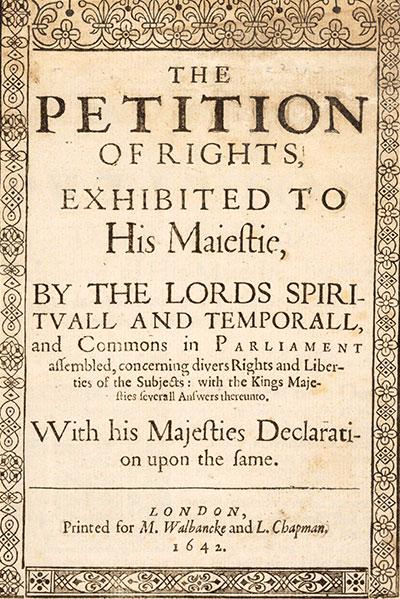 |
| PETITION OF RIGHT |
The next recorded
milestone in the development of human rights was the Petition of Right,
produced in 1628 by the English Parliament and sent to Charles I as a statement
of civil liberties. Refusal by Parliament to finance the king’s unpopular
foreign policy had caused his government to exact forced loans and to quarter
troops in subjects’ houses as an economy measure. Arbitrary arrest and
imprisonment for opposing these policies had produced in Parliament a violent
hostility to Charles and to George Villiers, the Duke of Buckingham.
The Petition of Right of 1628 is one of England's most famous
Constitutional documents. It was written by Parliament as an objection to an
overreach of authority by King Charles I. During his reign, English citizens
saw this overreach of authority as a major infringement on their civil rights.
The Petition of Right, initiated by Sir Edward Coke, was
based upon earlier statutes and charters and asserted four principles:
(1) No taxes may be
levied without consent of Parliament,
(2) No subject may be
imprisoned without cause shown (reaffirmation of the right of habeas corpus),
(3) No soldiers may be
quartered upon the citizenry, and
(4) Martial law may
not be used in time of peace.
Each of these four points enumerated specific civil rights
that Englishmen felt Charles I had breached throughout his reign. Although he'd
never been that popular as the monarch, his abuse of power escalated to an
intolerable level after Parliament refused to finance his unpopular foreign
policies.
The issue of human rights became a tremendous cause in 17th century
England. The protection of the people's rights (especially the right to
political participation, and freedom of religious belief and observance)
against an oppressive government was one of the most important goals of the
English Revolution of 1640 (which led to rebel leader Oliver Cromwell heading
the government and the King being executed).
It was also the reason for the rebellion against the civil
administration - the 'Glorious Revolution' - of 1688 which saw another King on the throne, but
also led to the English Bill of Rights.
The Bill of Rights dealt with the fundamental concerns of the time.
·
It
made the King subject to the rule of law, like any citizen, instead of claiming
to be the law's (divine) source.
·
It
required the King to respect the power of Parliament - elected by the people,
with the power to control the state's money and property.
·
It
protected some basic rights to justice - excessive bail or fines, cruel and
unusual punishments and unfair trials:
·
it guaranteed juries, impartial courts and
independent judges.
·
It
repeated some of royal promises made by King John, under duress, in the Magna Carta (though Magna Carta was intended to
benefit the privileges of the aristocracy of the time, not the whole
population).
· It also established the people's preferred
Protestant religion, at a time when having a Catholic King was thought to
endanger the sovereignty of England. The Pope, in those days, was still a
relatively powerful ruler of a foreign country.
Natural Rights:
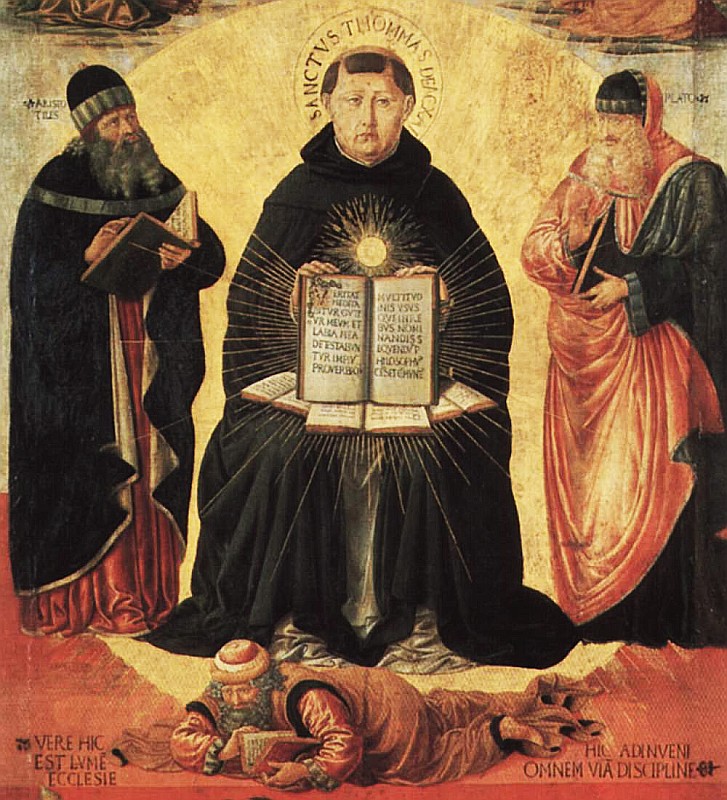 |
| NATURAL RIGHTS |
The concept of natural
law is related to the concept of natural rights. Natural
law first appeared in ancient Greek philosophy, and
was referred to by Roman philosopher Cicero. It was subsequently alluded to in the Bible, and
then developed in the Middle
Ages by Catholic philosophers such
as Albert the Great and
his pupil Thomas Aquinas. During the Age of
Enlightenment, the
concept of natural laws was used to challenge the divine
right of kings, and became an alternative justification for
the establishment of a social
contract, positive
law, and government –
and thus legal rights – in the form of classical republicanism.
Conversely, the concept of natural rights is used by others to challenge the
legitimacy of all such establishments.
In the seventeenth and
eighteenth centuries in Europe, several philosophers proposed the concept of
"natural rights," rights belonging to a person by nature and because
he was a human being, not by virtue of his citizenship in a particular country
or membership in a particular religious or ethnic group. It is believed that
this concept has its authentic origins in the in works of distinguished English
philosopher from seventeenth century John
Locke.
John
Locke, developed the concept of natural rights, the
notion that people are naturally free
and equal. Though Locke believed natural rights were derived from
divinity since humans were creations of God, his
ideas were important in the development of the modern notion of rights. Lockean
natural rights did not rely on citizenship nor any law of the state, nor were
they necessarily limited to one particular ethnic, cultural or religious group. John
Locke discussed natural rights in his work, identifying them
as being "life, liberty, and
property", and argued that such fundamental rights could not be
surrendered in the social
contract.
According to Locke
there are three natural rights:
·
Life: everyone is entitled
to live.
·
Liberty: everyone is entitled
to do anything they want to so long as it doesn't conflict with the first
right.
·
Property: everyone
is entitled to own all they create or gain through gift or trade so long as it
doesn't conflict with the first two rights.
Preservation of the
natural rights to life, liberty, and property was claimed as justification for
the rebellion of the American colonies.
The term natural rights eventually fell into
disfavor, but the concept of universal rights took root. Philosophers such as Thomas
Paine, John Stuart Mill, and Henry David Thoreau expanded the concept.
Thoreau is the first philosopher to use the term, "human rights", and
does so in his treatise, Civil Disobedience. This work has been extremely influential on
individuals as different as Leo Tolstoy, Mahatma
Gandhi, and Martin Luther King. Gandhi and King, in particular, developed their
ideas on non-violent resistance to unethical government actions from this work.
The idea of human rights is also closely related to that of natural rights: some
acknowledge no difference between the two, regarding them as synonymous, while
others choose to keep the terms separate to eliminate association with some
features traditionally associated with natural rights. Natural rights, in
particular, are considered beyond the authority of any government or international body to dismiss.
U.S. Declaration of Independence :
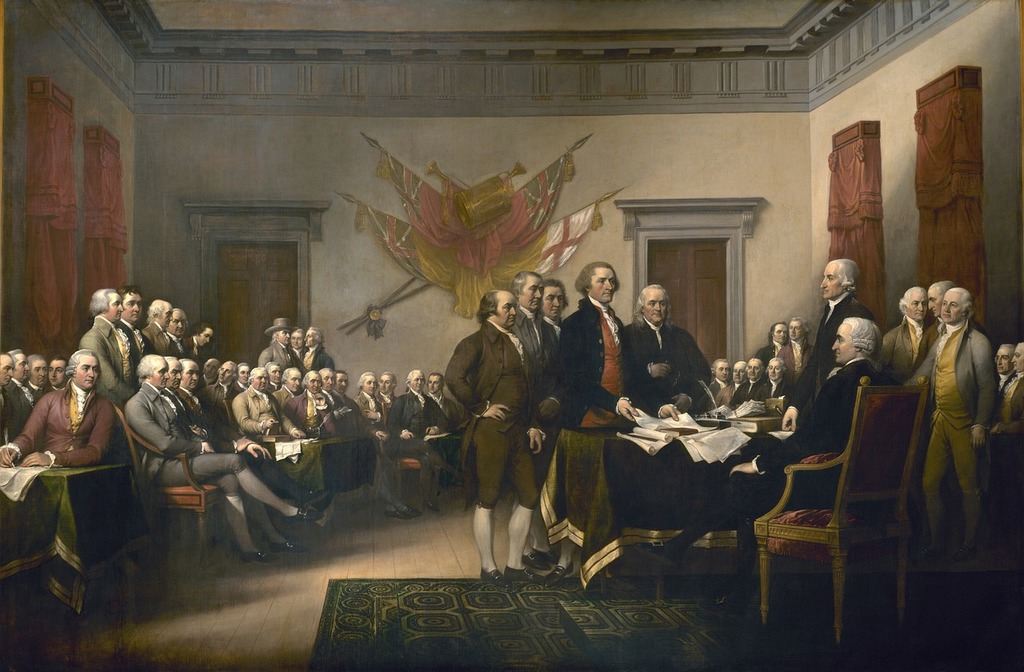 |
| US DECLARATION OF INDEPENDENCE |
In the late
1700s, two historical events and two documents made indelible contribution to
the constitutional development of the concept of human rights. In 1776, most of
the British colonies in North America proclaimed their independence from the
British Empire in the U.S. Declaration of
Independence written by Thomas Jefferson. Sadly, the Declaration did not, in
fact, extend human rights to all human beings. The first US Constitution
expressly preserved the institution of slavery and did not recognize the equal
rights of women. Many 'rights' were added to the US Constitution over the next
150 years.
On July 4, 1776, the United States Congress approved the
Declaration of Independence. Its primary author, Thomas Jefferson, wrote the Declaration as a formal
explanation of why Congress had voted on July 2 to declare independence from
Great Britain, more than a year after the outbreak of the American
Revolutionary War, and as a statement announcing that the thirteen American Colonies
were no longer a part of the British Empire. Congress issued the Declaration of
Independence in several forms. It was initially published as a printed
broadsheet that was widely distributed and read to the public.
The declaration opens with a preamble describing the document's
necessity in explaining why the colonies have overthrown their
ruler and chosen to take their place as a separate nation in the world.
All men are created
equal and there are certain unalienable rights that governments should never
violate. These rights include the right to life, liberty and the pursuit of
happiness. When a government fails to protect those rights, it is not only the
right, but also the duty of the people to overthrow that government.
The Constitution of the United States of America (1787) and Bill of Rights (1791);

Written
during the summer of 1787 in
Philadelphia, the Constitution of the United States of America is the
fundamental law of the US federal system of government and the landmark
document of the Western world. It is the oldest written national constitution
in use and defines the principal organs of government and their jurisdictions
and the basic rights of citizens.
The first ten
amendments to the Constitution—the Bill of Rights—came into effect on December
15, 1791, limiting the powers of the federal government of the United States
and protecting the rights of all citizens, residents and visitors in American
territory.
·
The Bill of Rights protects freedom of speech, freedom of
religion, the right to keep and bear arms, the freedom of assembly and the
freedom to petition
·
It also prohibits unreasonable search and seizure, cruel and
unusual punishment and compelled self-incrimination.
·
Among the legal protections it affords, the Bill of Rights
prohibits Congress from making any law respecting establishment of religion and
prohibits the federal government from depriving any person of life, liberty or
property without due process of law.
·
In federal criminal cases it requires indictment by a grand jury
for any capital offense, or infamous crime, guarantees a speedy public trial
with an impartial jury in the district in which the crime occurred, and
prohibits double jeopardy.
In 1789 the people of France brought
about the abolishment of the absolute monarchy and set the stage for the
establishment of the first French Republic. Just six weeks after the storming
of the Bastille, and barely three weeks after the abolition of feudalism,
the Declaration of the Rights of Man and
of the Citizen (French: La Déclaration des Droits
de l’Homme et du Citoyen) was adopted by the
National Constituent Assembly as the first step toward writing a constitution
for the Republic of France.
The Declaration proclaims that all
citizens are to be guaranteed the rights
of “liberty, property, security, and resistance to oppression.” It argues that the need for law derives
from the fact that;
“...the
exercise of the natural rights of each man has only those borders which assure
other members of the society the enjoyment of these same rights.” Thus, the
Declaration sees law as an “expression of the general will,“ intended to
promote this equality of rights and to forbid “only actions harmful to the
society.”
In other words, the people of France overthrew their monarchy
in 1789 and established the first French Republic. Later that year the National
Assembly of France adopted Declaration of the Rights of Man and of the Citizen. Both Declaration of Independence and Declaration
of the Rights of Man proclaimed equality of all people before the law and other
inalienable rights and liberties.
The Universal
Declaration of Human Rights (1948) :
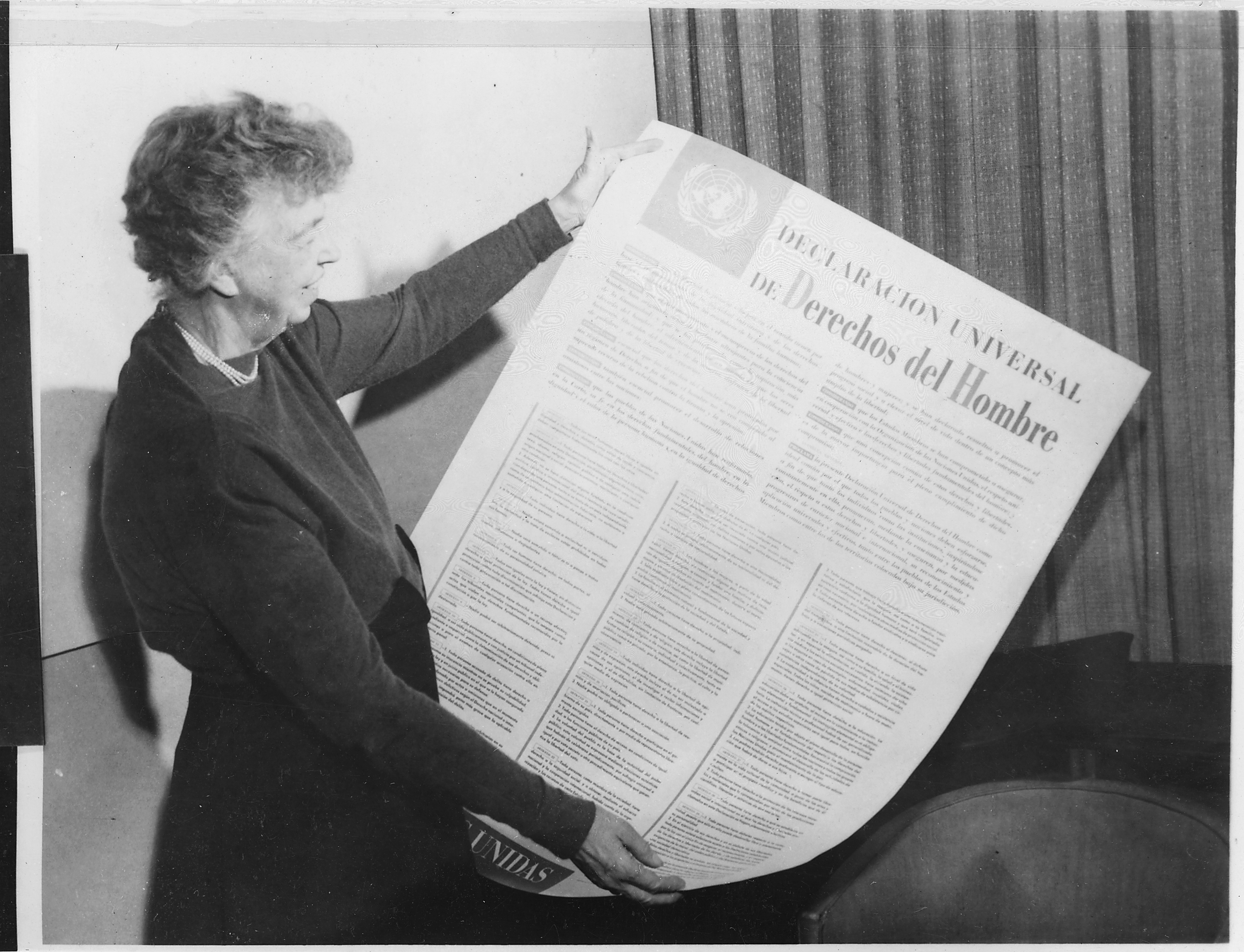
On October 24, 1945, in
the aftermath of World War II, the United Nations came into being as an
intergovernmental organization, with the purpose of saving future generations
from the devastation of international conflict.
The Charter of the United
Nations established six principal bodies, including the General Assembly, the
Security Council, the International Court of Justice, and in relation to
human rights, an Economic and Social Council (ECOSOC).
The UN Charter
empowered ECOSOC to establish “commissions in economic and social fields and
for the promotion of human rights….” One of these was the United Nations Human
Rights Commission, which, under the chairmanship of Eleanor Roosevelt,
saw to the creation of the Universal Declaration of Human Rights.
By
1948, the United Nations’ new Human Rights Commission had captured the world’s
attention. Under the dynamic chairmanship of Eleanor Roosevelt—President Franklin Roosevelt’s widow, a human rights
champion and the United States delegate to the UN—the Commission set out to
draft the document that became the Universal
Declaration of Human Rights. Roosevelt, credited with its inspiration,
referred to the Declaration as the international Magna Carta for all mankind. It was adopted by the United Nations on
December 10, 1948.
In
its preamble and in Article 1, the
Declaration unequivocally proclaims the inherent rights of all human
beings:
“Disregard and
contempt for human rights have resulted in barbarous acts which have outraged
the conscience of mankind, and the advent of a world in which human beings
shall enjoy freedom of speech and belief and freedom from fear and want has
been proclaimed as the highest aspiration of the common people… All human
beings are born free and equal in dignity and rights.”
The
Member States of the United Nations pledged to work together to promote the
thirty Articles of human rights that, for the first time in history, had been
assembled and codified into a single document. In consequence, many of these
rights, in various forms, are today part of the constitutional laws of
democratic nations.
Member
states of
the United Nations pledged to promote respect for the human rights of all. To
advance this goal, the UN established a Commission
on Human Rights and charged it with the task of drafting a document spelling
out the meaning of the fundamental rights and freedoms proclaimed in the
Charter. The Commission, guided by Eleanor Roosevelt’s forceful leadership,
captured the world’s attention.
On December 10, 1948, the Universal
Declaration of Human Rights (UDHR) was
adopted by the 56 members of the United Nations. The vote was unanimous,
although eight nations chose to abstain.
The UDHR, commonly
referred to as the international Magna Carta, extended the revolution in
international law ushered in by the United Nations Charter – namely, that how a
government treats its own citizens is now a matter of legitimate international
concern, and not simply a domestic issue. It claims that all rights are interdependent and indivisible. Its Preamble eloquently
asserts that:
Recognition of the inherent dignity and of the
equal and inalienable rights of all members of the human family is the
foundation of freedom, justice, and peace in the world.
The influence of the UDHR
has been substantial. Its principles have been incorporated into the
constitutions of most of the more than 185 nations now in the UN.

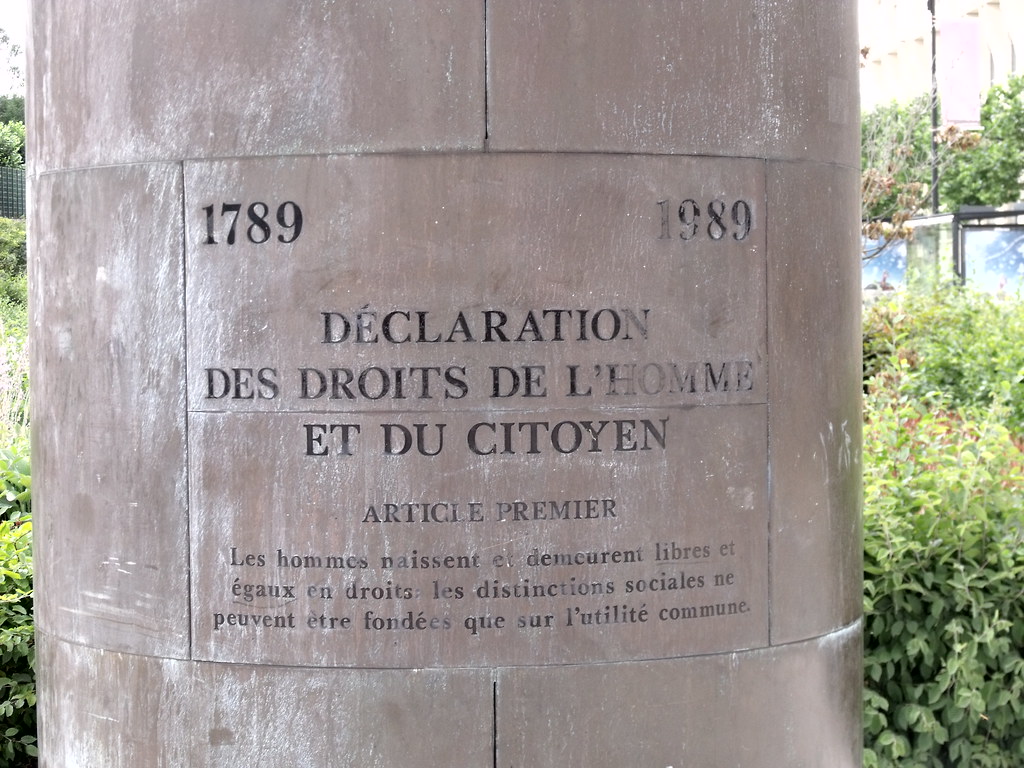
0 comments:
Post a Comment